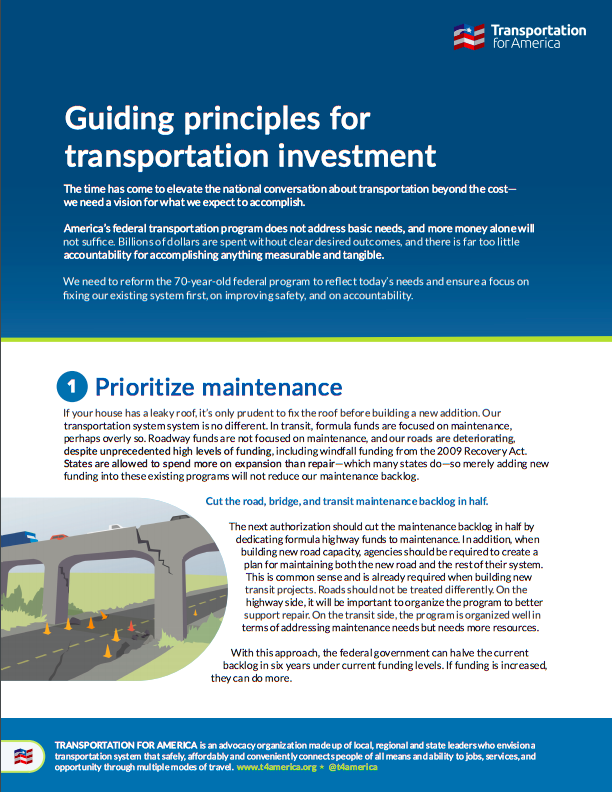Posts Tagged "usdot"
USDOT faces widespread opposition to proposed congestion rule
Nearly 5,000 individuals and 150 organizations — including dozens of local chambers of commerce and elected officials — joined with T4America to oppose USDOT’s flawed proposal for measuring traffic congestion and urge them to rethink their approach.
Proposed federal rules for measuring and addressing congestion in states and metro areas generate widespread opposition
Led by Smart Growth America (SGA), Transportation for America and the National Complete Streets Coalition, a broad coalition of business groups, local elected leaders, national and local organizations and thousands of individuals filed formal comments last week urging USDOT not to incentivize transportation projects that would punish cities investing in public transportation, treat main streets like highways, ignore the needs of people walking or biking, and push local communities of all sizes to waste billions of dollars in vain attempts to build their way out of congestion.
Time is running out to tell USDOT to measure more than just vehicles
These two streets are very different. Why does the U.S. Department of Transportation want to measure their success the same way?
A large congressional delegation asks USDOT to improve the proposed congestion rule
Earlier this week, a large group of senators and representatives sent a letter to USDOT Secretary Foxx, requesting that USDOT change a flawed proposed rule for measuring congestion. They asked that USDOT assess the movement of people, rather than vehicles, as a better measure of congestion and reward the improvements that can come from transit, toll lanes, or encouraging travelers to choose other options like walking or biking.
How best to stitch a community back together divided by an interstate?
USDOT is in the midst of a new initiative to address some of damage created by interstates driven through the heart of urban areas. Last week a group of experts traveled to Nashville to discuss ways to repair the damage inflicted upon a part of North Nashville by a segment of Interstate 40.
What would a better measure of congestion look like? Unpacking an alternative
USDOT’s draft rule that will govern how states and metro areas will have to measure and address congestion would define “success” in incredibly outdated ways. In a webinar earlier this week, we discussed better ways to measure congestion and a proposal we’re sending to USDOT.
USDOT’s congestion measure is not good — what would a better one look like?
Thousands of you have sent letters to USDOT on their draft rule that will govern how states and metro areas will have to measure and address congestion — a proposal that currently defines “success” in outdated ways. It’s clear that USDOT’s proposed measure doesn’t cut it, but if you want to hear more about a better way to measure congestion, join us next week.
Columbus, OH takes center stage of national movement for transportation innovation – but cities nationwide are interested in connected streets
Earlier today the U.S. Department of Transportation (USDOT) named Columbus, Ohio, the winner of its highly competitive Smart City Challenge.
Ask USDOT to #MakeMeCount this Bike to Work Day
This Friday, thousands of people across the country will put on their helmets and take to the streets for National Bike to Work Day, an annual event promoting active commuting options and safer streets. Will you be joining the event this week? If so, make your ride even more impactful by telling USDOT to #MakeMeCount when it comes to measuring how well a street works.
When it comes to traffic congestion, we need to measure more than just vehicles
Last week, USDOT issued a draft rule that will govern how states and metro areas will have to measure and address congestion, along with other metrics like freight movement and emissions. However, the rule as it is currently written would measure success in outdated ways. Old measures leads to old “solutions,” like prioritizing fast driving speeds above all other modes of transportation and their associated benefits.





